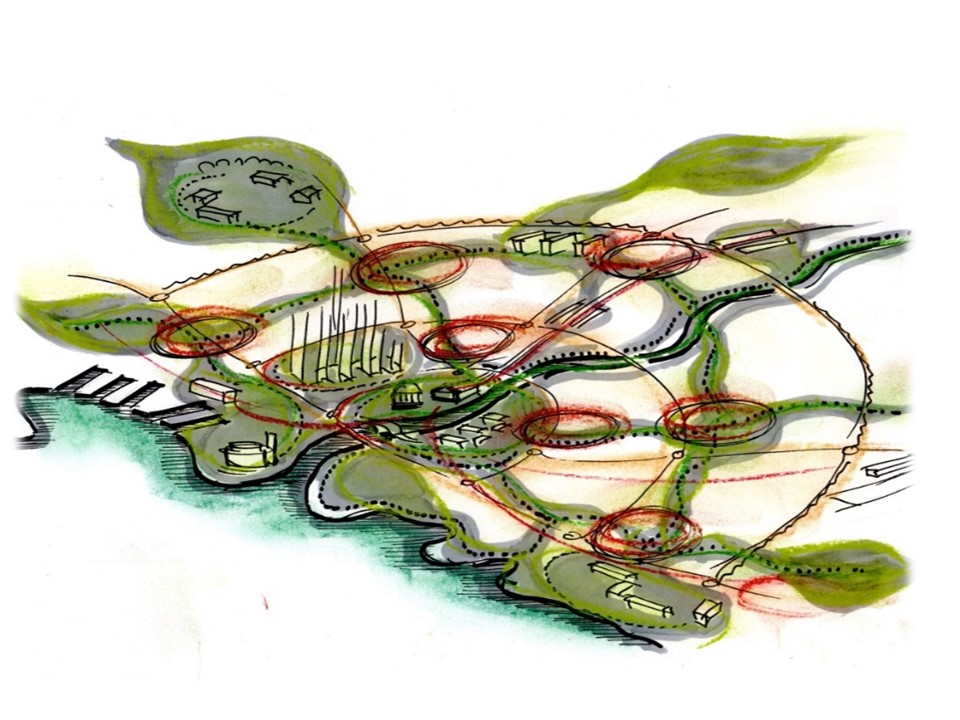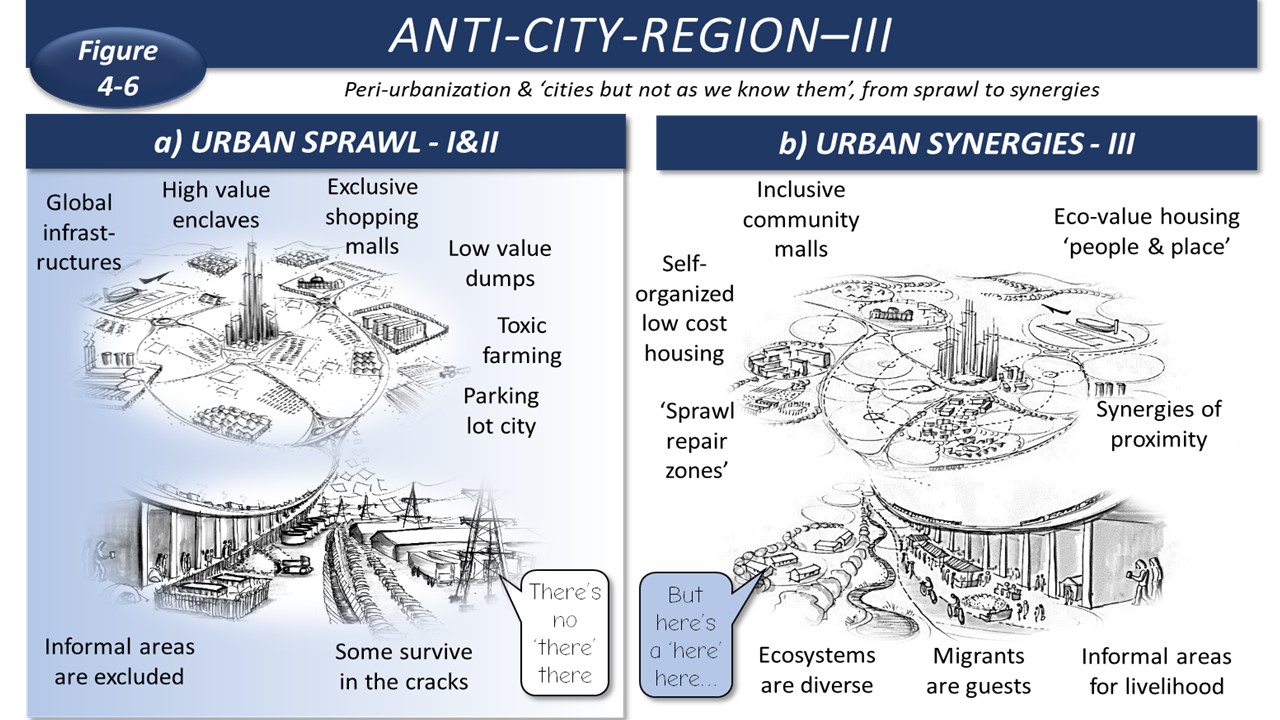Peri-urban special issue & launch
August 4th 1300 BST – hybrid event, Indonesia & online
The ‘peri-urban’ hinterland, the area between and around cities, shows the extended footprint of human settlements. Both poor and rich sprawl into the peri-urban, in the line of flood or fire, along with poverty, insecurity and alienation. To improve the resilience of cities and human settlements – climatic, ecological, social and economic – we have to start with the peri-urban as a site for bio-regional thinking.
So we now launch the Call for the ‘Global Peri-urban’ Special Issue – August 4th 1300-1430 BST – hybrid event at the Indonesia / global ‘ICPEU’ conference on Planning in the Age of Uncertainty http://icpeu.teknik.ub.ac.id/ – The meeting was hosted by Universitas Brawijaya, Indonesia, as part of the ICPEU conference
Materials include: Launch recording (part 2 only): Joe Ravetz presentation: with links below
Launch discussion included – overview of peri-urban agenda (Joe Ravetz, Manchester Urban Institute): UN Habitat – Urban-Rural Linkages program (Grace Githiri, UN Habitat):Peri-urban Initiative (Chella Rajan, Indian Institute of Technology Madras):Introduction to special issue (Muhammed Salem, Cairo University).
For publication details see the Frontiers page – https://www.frontiersin.org/research-topics/57879/land-use-management-in-peri-urban-areas.
The theme also follows closely on other peri-urban / bio-regional / agro-ecological initiatives –
- the global project Peri-cene with its Policy Lab of 16 cities around the world
- the new Global Peri-Urban Initiative based in Chennai.
- UN Habitat Urban-Rural Linkages program, and the forthcoming Compendium on PURL (Peri-Urban-Rural Linkages).
- https://urbanpolicyplatform.org/urban-rural-linkages/
- https://urbanpolicyplatform.org/download/url-5th-newsletter/
- https://urbanpolicyplatform.org/download/urban-rural-linkages-guiding-principles-framework-for-action-to-advance-integrated-territorial-development/
- https://urbanpolicyplatform.org/download/managing-urban-rural-linkages-for-biodiversity/
- Other peri-urban / bio-regional / agro-ecological projects & programs are invited, to explore ideas on ways forward, build a community of interest, and plan for next steps on this crucial issue.
Contact joe.ravetz@manchester.ac.uk for enquiries & ideas

Background
Peri-urban as ‘Anti-city-region’
(extract from Deeper-City: Collective-Intelligence-and-the-Pathways-from-Smart-to-Wise – also see the Anti-city-region-III section.
The story of cities runs in parallel with ‘anti-cities’. These are human settlements or clusters or installations which are different in fundamental ways. An airport terminal is a kind of transit anti-city, a hive of activity with thousands of passengers and workers, but lacking any deeper identity or synergy. A refugee camp is another kind of anti-city, one of forced displacement from communities and livelihoods. A mining town or factory town lives or dies with its key industry; tourist resorts might be popular, but turnover is high and synergies are short-lived. The logical conclusion is a ‘planetary urbanization’ where every kind of human installation plays some part in the global urban system, from strip-mining to deep sea fishing.[i] But most of these are in the form of anti-cities, lacking one or more dimensions of cohesion and synergy.
Such questions are most acute with informal settlements – slums, shanty towns, barriadas, bidonvilles, and others. Are these the proto-cities of the future, of enterprise and collaboration – or the anti-cities of the future, places of insecurity, pollution, segregation, bypassing of livelihoods and corrupt government?[ii] Global megatrends suggest that informal settlements could house half the global population in the coming decades: but they also suggest a rethink of what is informal. While slum dwellers in many countries are taking steps towards some level of security, new kinds of informality are emerging. There are ‘radical cities’ experiments in co-housing or cooperative models, and in peri-urban-rural food systems.[iii] The AirBnB and WeWork platforms are potential game-changers for ownership or rental structures, opening the door to fully transient distributed and multi-local cities. It may be the most plausible future is one of anti-cities, impossible mixtures of rich and poor, static or transient, emerging mixtures of housing and industry, dense clusters and extended sprawl.[iv]

